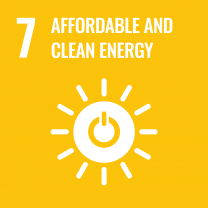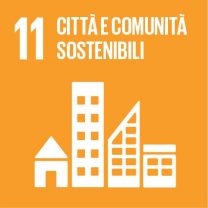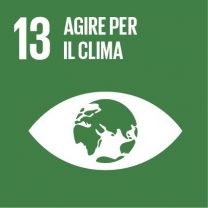Author
Maurilio Zuccalà
Sustainable development goals
Temi
- home comfort and energy consumption
Strumenti
- approach to a digital ecosystem
- web application
- gamification and rewarding
- data visualization
- citizen engagement
What does the promoted behavioral change consist of?
The SPICA project has created a solution for the measurement and control of energy consumption and internal comfort conditions in residential units, aiming at supporting the raising of awareness and therefore intelligent energy management by users. The energy requalification of apartments is in fact a constant priority for policies to contain consumption but, among the main barriers to the implementation of concrete interventions, is the lack of knowledge on the part of citizens on the use of energy in the home environment, a factor that often involves inattention to daily choices that affect the consumption of homes and buildings.
Thanks to the smart visualization of the collected data and the use of gamification, the SPICA solution allows apartment owners to better understand the effects of their consumption and stimulates personal reflection by activating virtuous behaviors: people’s habits improve, citizens become more aware of their own actions and this can make a difference both in terms of energy consumption and environmental impact.
Thanks to the smart visualization of the collected data and the use of gamification, the SPICA solution allows apartment owners to better understand the effects of their consumption and stimulates personal reflection by activating virtuous behaviors: people’s habits improve, citizens become more aware of their own actions and this can make a difference both in terms of energy consumption and environmental impact.
What are the main features of the tools designed/implemented to promote behavioral change and how have they been tested?
The SPICA project has tested an integrated solution for the collection, processing and display of data acquired through sensors installed in apartments and, in some cases, outside residential buildings.
In particular, the SPICA solution consists of a monitoring kit that combines the recording of electricity consumption with data of environmental comfort and indoor air quality (temperature, relative humidity, pressure, lighting, volatile organic compounds), and a web application intended for condominiums for smart and real-time visualization of the data detected by the sensors.
In addition to a series of dashboards for a user-friendly graphic representation of the measured values, also accompanied by indications on comparisons and deviations from the threshold values for each monitored quantity, the SPICA application includes functionalities based on gamification and rewarding logic: thanks to the game and to a point incentive mechanism with both individual and condominium rankings, the application allows to check the trend in consumption day by day and implement virtuous behaviours.
The SPICA solution is based on an information architecture that integrates data from housing sensors and those of the territory through an open digital ecosystem model based on API.
The experimentation involved 20 residential buildings in Milan, both “efficient” (ie already subject to energy redevelopment) and “inefficient”, for a total of about 80 real estate units monitored during the project.
In particular, the SPICA solution consists of a monitoring kit that combines the recording of electricity consumption with data of environmental comfort and indoor air quality (temperature, relative humidity, pressure, lighting, volatile organic compounds), and a web application intended for condominiums for smart and real-time visualization of the data detected by the sensors.
In addition to a series of dashboards for a user-friendly graphic representation of the measured values, also accompanied by indications on comparisons and deviations from the threshold values for each monitored quantity, the SPICA application includes functionalities based on gamification and rewarding logic: thanks to the game and to a point incentive mechanism with both individual and condominium rankings, the application allows to check the trend in consumption day by day and implement virtuous behaviours.
The SPICA solution is based on an information architecture that integrates data from housing sensors and those of the territory through an open digital ecosystem model based on API.
The experimentation involved 20 residential buildings in Milan, both “efficient” (ie already subject to energy redevelopment) and “inefficient”, for a total of about 80 real estate units monitored during the project.
What results have been achieved? What are the potentials and obstacles?
During the testing of the SPICA solution, about 12.5 million data points were acquired and processed by the sensors installed inside and outside the apartments, and more than 60,000 reward points were earned by users interacting with the web application.
Participation was satisfactory and in general the comparison between efficient and inefficient condominiums (made evident among other things to all users through appropriate graphics included in the application) confirmed the better behaviour of the former in relation to the monitored quantities.
The experimentation has shown that the SPICA solution constitutes a potentially useful service for those who have already carried out energy requalification interventions, for those who are evaluating them, and for those who live in an inefficient building: in the first case, it can help the users to “regulate” their behaviour in the renewed environment in which they live by optimizing their consumption; in the second case it can help guide the design of efficiency measures, identifying any critical issues; in the third, it can help regulate the systems, reduce bills and improve the comfort and quality of the air inside the apartment.
The main points of attention encountered during the project concern the commitment that it was necessary to dedicate to communication and engagement activities in order to reach significant numbers of users and therefore of data collected; Furthermore, in the context of sensor-based home monitoring, the growing availability on the market of commercial products that can be purchased directly by end users should not be overlooked, which in some ways appear similar to the SPICA solution but which often consist of “closed” systems and not always oriented to the real creation of awareness in citizens.
Participation was satisfactory and in general the comparison between efficient and inefficient condominiums (made evident among other things to all users through appropriate graphics included in the application) confirmed the better behaviour of the former in relation to the monitored quantities.
The experimentation has shown that the SPICA solution constitutes a potentially useful service for those who have already carried out energy requalification interventions, for those who are evaluating them, and for those who live in an inefficient building: in the first case, it can help the users to “regulate” their behaviour in the renewed environment in which they live by optimizing their consumption; in the second case it can help guide the design of efficiency measures, identifying any critical issues; in the third, it can help regulate the systems, reduce bills and improve the comfort and quality of the air inside the apartment.
The main points of attention encountered during the project concern the commitment that it was necessary to dedicate to communication and engagement activities in order to reach significant numbers of users and therefore of data collected; Furthermore, in the context of sensor-based home monitoring, the growing availability on the market of commercial products that can be purchased directly by end users should not be overlooked, which in some ways appear similar to the SPICA solution but which often consist of “closed” systems and not always oriented to the real creation of awareness in citizens.
[last update: 26/1/2021]
Research team at PoliMi
Cefriel Practices involved in the project:
- Enterprise Software Architectures
- Digital Ecosystems
- Knowledge Technologies
- Design
PROJECT
SPICA – Sharing Power Information for Citizen Awareness (2017-2019)
Research and development project co-financed by the Lombardy Region as part of the ERDF Regional Operational Programme 2014-2020 Axis I Call for “R&D Line for Aggregations”









